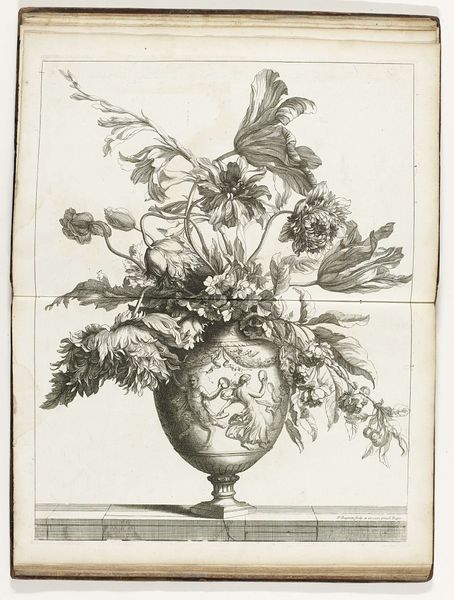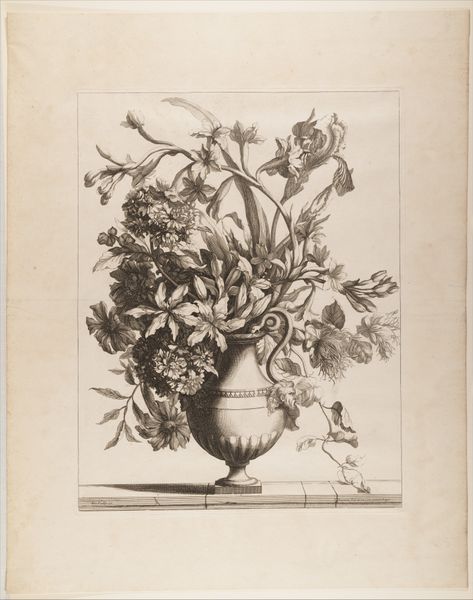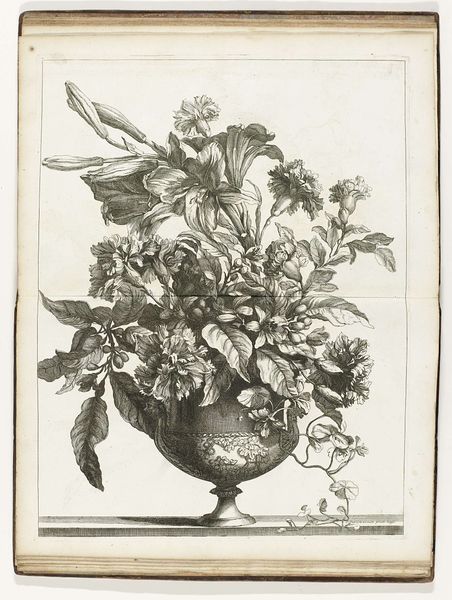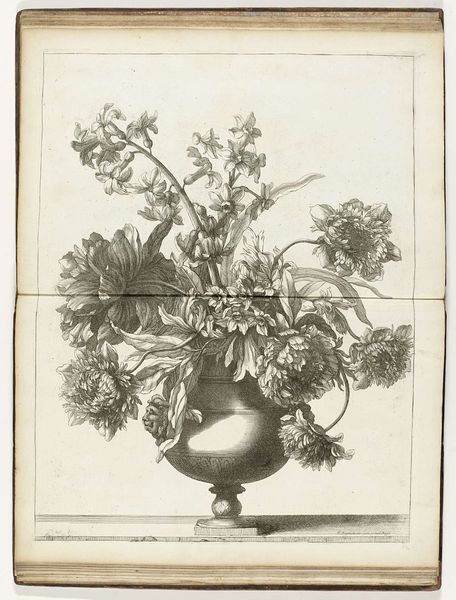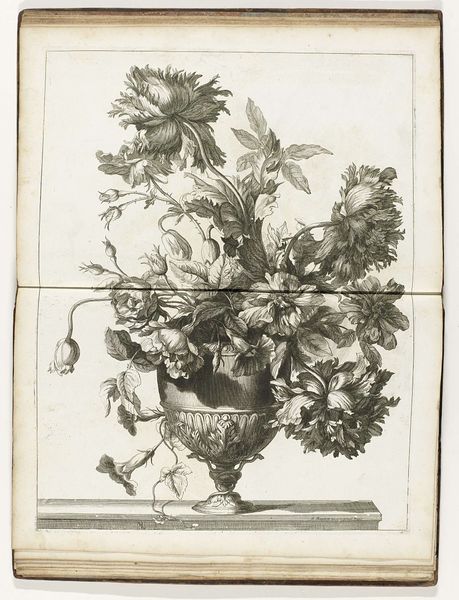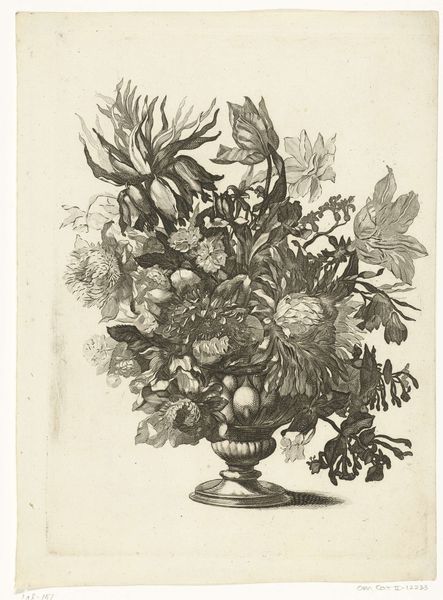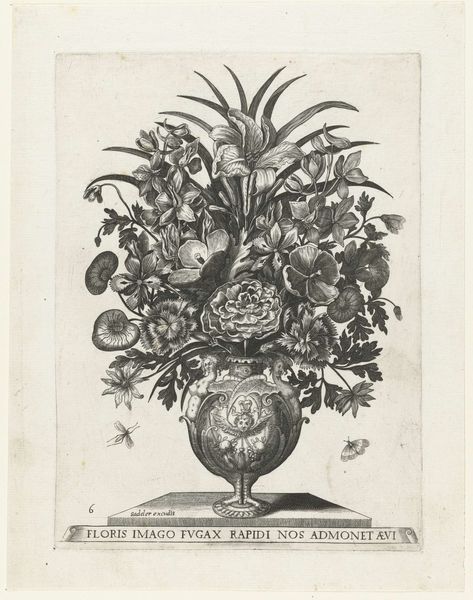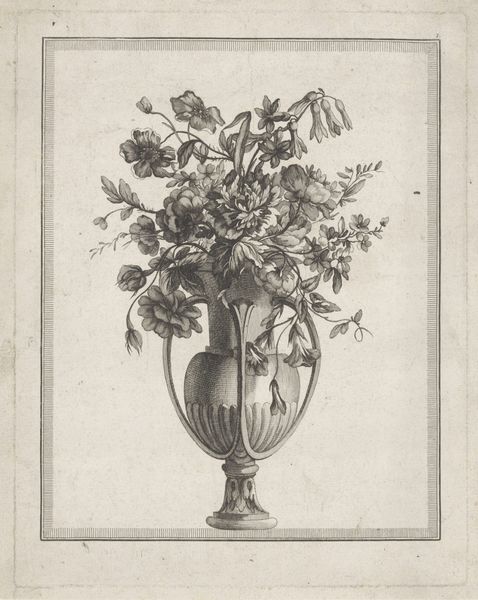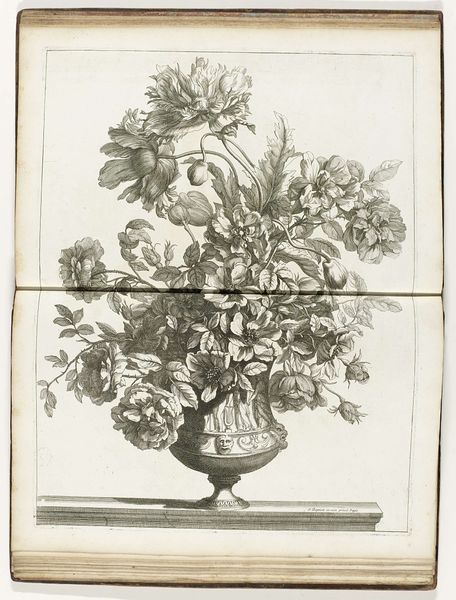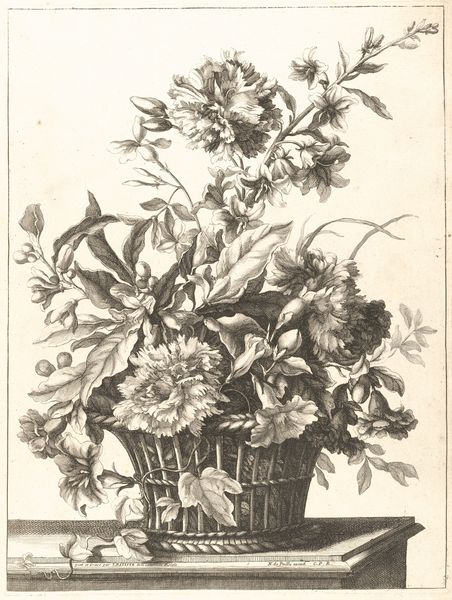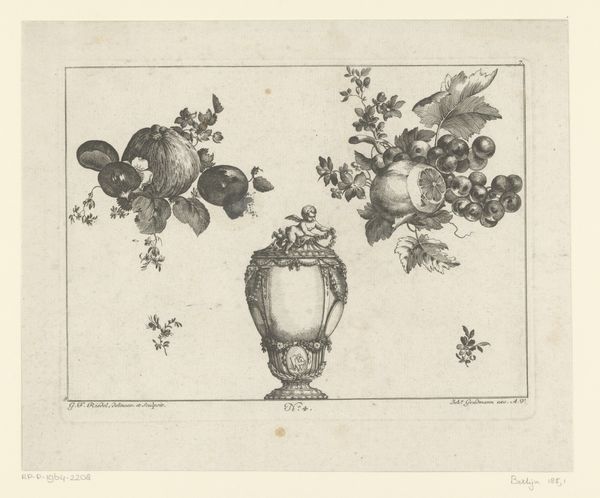
drawing, print, engraving
#
drawing
#
baroque
#
pen drawing
# print
#
form
#
line
#
engraving
#
botanical art
#
watercolor
#
realism
Dimensions: height 487 mm, width 373 mm
Copyright: Rijks Museum: Open Domain
Curator: Looking at this print, the first word that springs to mind is abundance. The sheer volume of blooms practically spills from the vase! Editor: Indeed. Let's situate this piece. What we have here is "Bloemenvaas," or "Flower Vase," by Jean-Baptiste Monnoyer, dating back to somewhere between 1680 and 1695. The Rijksmuseum houses this remarkable drawing, crafted using pen, engraving, and potentially some watercolor. It’s a fascinating example of Baroque botanical art. Curator: That vase feels loaded with symbolism, doesn't it? Look at the classical imagery around the body of the vase and the lion head handles. A clear attempt to graft classicism onto the burgeoning genre of the floral still life. What about the flowers themselves? Editor: They’re meticulously rendered, each petal defined by subtle gradations. The roses could represent love or secrecy, depending on their color; poppies may symbolize sleep, death or oblivion. It speaks to Baroque fascination with memento mori and a awareness of fleeting beauty. There’s almost a melancholy baked into such detailed beauty destined to decay. Curator: Interesting how this depiction of lavish nature contrasts the realities for many during that period. We see these images consumed by those with privilege while vast disparities existed for those existing on the fringes. The act of representation, of idealization, carries complex social weight when placed against historical and societal backdrops of inequality. The piece really underscores a powerful relationship between class, the consumption of beauty, and societal divisions during this era. Editor: Precisely. Monnoyer was a master of conveying the symbolic power imbued within everyday objects. His skilled engraving transforms an ephemeral bouquet into an enduring icon of its time. Curator: A window into a specific moment, highlighting disparities through what it chooses to represent and, conversely, what it chooses to leave out of the picture. Food for thought. Editor: I agree. This print shows how art acts as a carrier of both cultural memory and evolving ideas. Its visual language invites ongoing discussion, which I think we can both appreciate.
Comments
No comments
Be the first to comment and join the conversation on the ultimate creative platform.

